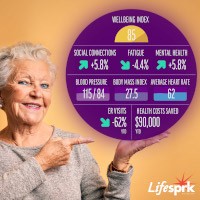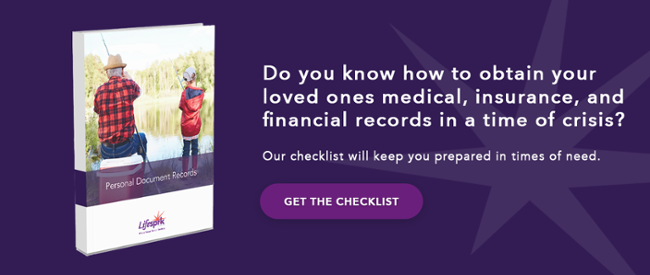
When my dad’s heart failure finally caught up with his kidneys, his nephrologist recommended hemodialysis. So for the next two-plus years, three times a week, four hours at a pop, my dad would sit in a recliner while the dialyzer filtered his blood. Tedious and uncomfortable, but predicable. Except when his fistula would become completely blocked, at which point, he’d have to undergo angioplasty. A bit of an ordeal but fairly straight-forward. Except for the time we couldn’t get him into an in-network hospital.
That’s when things got complicated. The out-of-network hospital couldn’t access my dad’s electronic health record (EHR) which meant they lacked several pieces of crucial data, including his URR and Kt/V, amount of phosphate binder and heparin, and whether he was on Procrit or Epogen. (All I could tell them was that he was allergic to penicillin—not exactly relevant.) Because patient privacy laws prevented the dialysis clinic from releasing information without my dad’s formal consent, the hospital had to print an authorization form, get my dad’s signature, fax said form to the clinic, and wait. Finally, some hours later, after a vascular surgeon reopened the fistula, my dad settled in for his four-hour shift. It was brutal for both of us. (On a side note, the experience motivated me to become my parents’ official healthcare representative.)
Technology-driven Transformations in Senior Care
There’s no doubt that technology has revolutionized the medical industry. However, our siloed data system has remained a barrier to human-centered senior care since the dawn of EHRs, due in large part to competing interests, HIPAA privacy rules, and concerns around data security. That’s the bad news.
Now the good news. Senior care is experiencing a massive technology-powered transformation, and it’s happening right here, right now, by companies like Lifespark. According to a recent article in Worth magazine, analysts believe that Lifespark “is building the model that will drive the next decade of innovation and advancement across a large swath of the aging sector.”
At the heart of this model is what Lifespark’s CEO and cofounder Joel Theisen, BSN, calls the Electronic Life Record (ELR). Unlike EHRs which store primarily medical data (such as blood pressure, weight, height, oxygen levels, heart rate, and cholesterol levels), Lifespark’s ELR also captures hundreds, if not thousands, of additional data points that can predict how to best optimize care solutions for aging adults. To quote the article, “The end-result is translated into highly personalized predictive care models which are then prescribed for in-home care.”
Another tremendous benefit of the ELR is that it belongs to the individual, rather than the clinic or the network. This attribute effectively eliminates the problems of siloed data, allowing people like my dad to be safely treated by any provider, anywhere, anytime, without having to go crawl through hoops to access their own data.
Artificial Intelligence Meets Whole-person Senior Care
The article also emphasizes the scope of Lifespark’s commitment and investment in getting this right. “Lifespark’s data-driven approach to transforming senior care is not some idea spun up by a recent MBA grad identifying whitespace in a multibillion-dollar market. In fact, Lifespark has been in business since 2004, and it was only through hundreds of thousands of hours of thorough hands-on management of thousands of seniors over the past 15 years did it arrive at the breakthrough concept of leveraging big data and predictive artificial intelligence (AI) to deliver whole-person care for the aging.”
If the concept of using predictive AI in everyday life sounds like the plot of a post-apocalyptic movie, it probably is. But we already rely on AI to improve and simplify our lives. Spellcheck, spam filters, Google searches, digital voice assistants (a.k.a., Siri, Alexa, Google Home, and Cortana), and those annoying little ads that stalk you for a week after you order Depends for your mom—all examples of predictive AI.
Creating a Better, Brighter Future
I’m no tech geek, but I do believe that technology is integral to enhancing the health, wellbeing, and independence of people as they age. As Lifespark’s Joel Theisen said, “Far too many seniors are not living out their golden years as they should—and Lifespark wants to create the infrastructure to make many more seniors live healthy, purposeful lives,” said Joel Theisen.
Amen to that.
To learn how Lifespark can help your loved ones age magnificently, schedule a free consultation.




